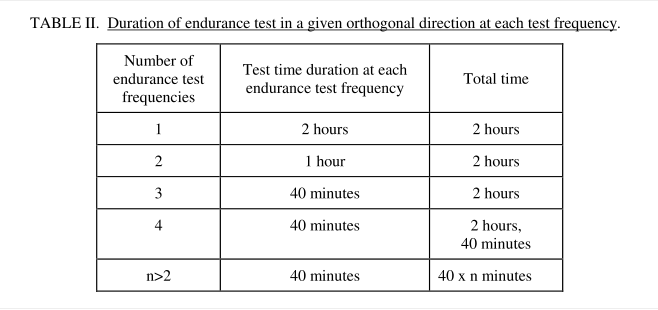MIL STD 167 Vibration test method is suitable for naval shipboard equipment installed on conventional axial propulsion vessels that require test procedures and requirements for ambient mechanical vibration and internal excitation vibration. The MIL STD 167 Vibration Test standard specifies test procedures and requirements for shipboard equipment affected by ambient mechanical vibration and vibration of rotating unbalanced components within the equipment.

MIL-STD-167 requires that each Type 1 ambient vibration test be performed in each of the three main vibration directions, meaning that a three-axis vibration test is required. During testing, the equipment under test is usually in operation or service and is tested on shock and vibration tables at the same fixed points or areas as on Navy ships.

The MIL-STD-167-1A standard requires vibration testing over a specified range of frequencies and amplitudes to detect any critical response outstanding or potential defects. For response outburst frequencies that most seriously affect the functional and/or structural integrity of the equipment, a durability test of at least 2 hours is required
In all tests, the equipment under test shall be fixed to the same connection point or area as the test bench, which itself shall be fixed to the ship. If alternative connection points or regions are specified, each connection configuration should be tested separately. For equipment that is hard mounted (not isolated) on board, it should be hard fixed to the test bench. For equipment designed to be fixed to deck and head support brackets, vertical supports should be used to simulate bulkheads. The bracket should be rigid enough to ensure that its movement is basically consistent with the movement of the platform on the test bench.
When installing the equipment on the electrodynamic shakers, the vibration direction shall be tested sequentially along the three straight direction axes installed on the ship, namely the vertical direction, the lateral direction and the forward and backward direction. For a horizontal electrodynamic shakers, the device can be rotated 90 degrees on the horizontal plane to allow vibration testing in both horizontal directions. In no case shall the equipment be installed in a direction different from its normal installation on board.
Other isolation devices integrated into the device housing, such as electronic boxes, should be tested in normal onboard configurations. Tests can also be carried out using internal devices.
The frequency of the durability test shall be selected from a list of candidates identified during the exploratory and variable frequency tests and must be approved. The equipment shall vibrate for at least 2 hours at the frequency determined to have the most serious impact on its functional or structural integrity. Appendix A provides guidance on selecting response outbursts from exploratory or variable frequency tests, determining whether they are significant, and whether more severe response outbursts can be identified. If more than one response highlight frequency is selected, the vibration test time at each frequency should meet the requirements in Table 11. If no response outbursts are observed or there is no effect on the structure/functional performance of the equipment, the vibration amplitude should conform to the requirements of Figures 1 and 2.


The internal excitation vibration category specifies the balance and vibration requirements applicable to any rotating machinery on a naval ship. Its main purpose is to help stabilize the rotor machinery and minimize internal vibration or excitation caused by unstable rotating parts.

The internal excitation vibration category also specifies rotor characteristics, revolutions per minute (RPM) of the rotating machinery in question, and the appropriate and necessary type of balance and procedure for the machinery operating at the specified RPM. During testing, the test equipment or system is mounted on a natural frequency that is less than a quarter of the frequency associated with the minimum operating speed of the equipment, or on an onboard mounting mount that is fixed in actual operation.
According to the MIL STD 167 Vibration test standard, each test test must be performed in each of the three main vibration directions (vertical, transverse, and front to back). You cannot test in the next direction until you have completed all the tests in one direction.
In order to determine whether the device has a peak response, the device should be fixed to the vibration test system during the test and vibrated in the frequency range of 4Hz to 33Hz with a single amplitude of 0.010±0.002 inches. The frequency can be varied at discrete intervals of 1Hz, with each frequency held for about 15 seconds. Alternatively, continuous frequency scanning with a frequency change rate of no more than 0.067 Hz/ SEC can be used.
During the test, the frequency that affects or violates the functional or structural requirements of the equipment, as well as the specific frequency and location of the response peak, should be recorded. In the case of continuous frequency scanning, these frequencies should be rounded to the nearest integer frequency. These frequencies will be considered candidate frequencies for durability testing.
In summary, the MIL STD 167 Vibration test was designed to systematically verify the performance and reliability of the device in the three main vibration directions and to identify critical response frequencies. This helps to improve the service life and safety of the equipment in the actual naval ship environment.
Daniel Boski says:
Need to test 41/2″
electric meter